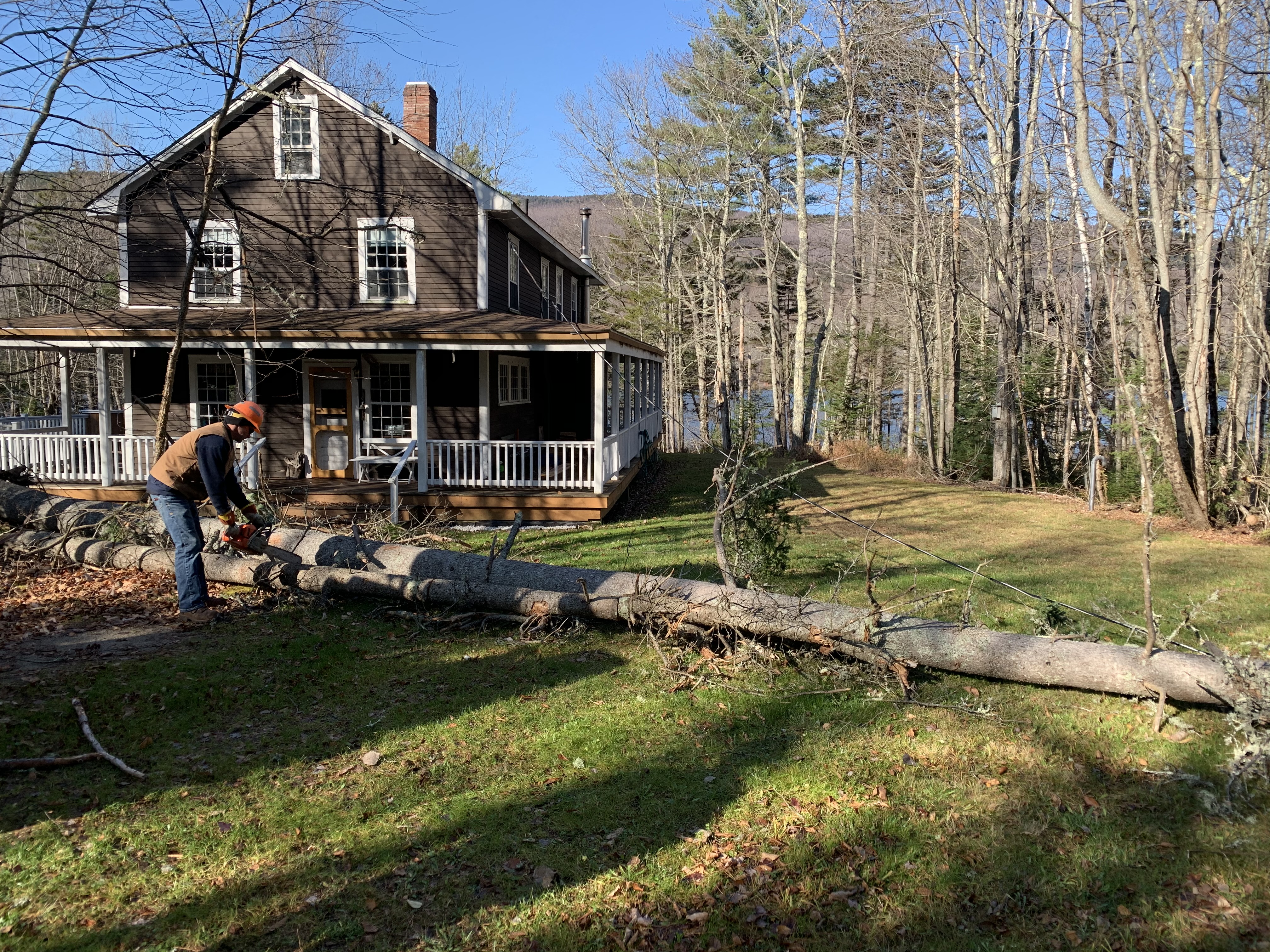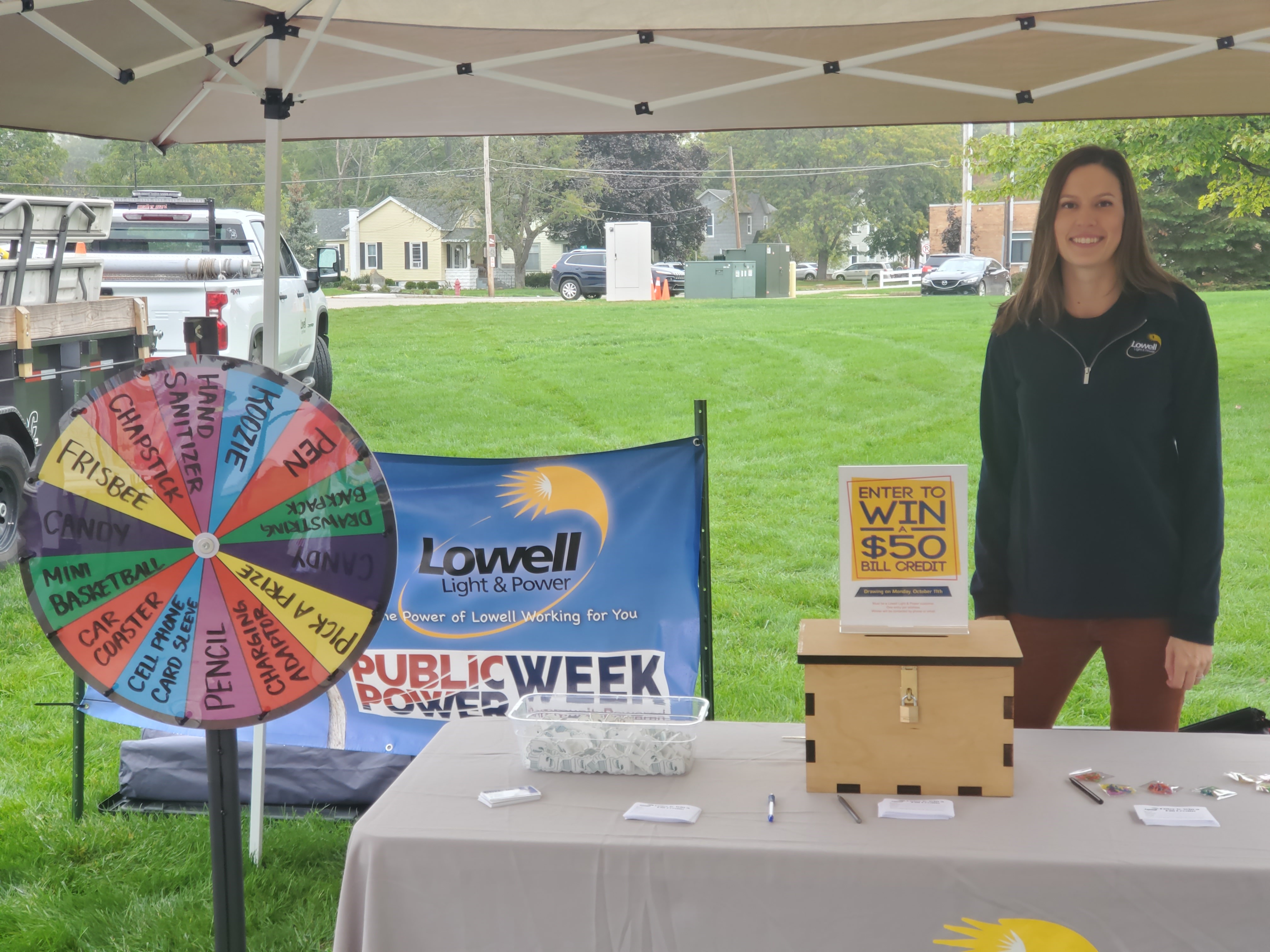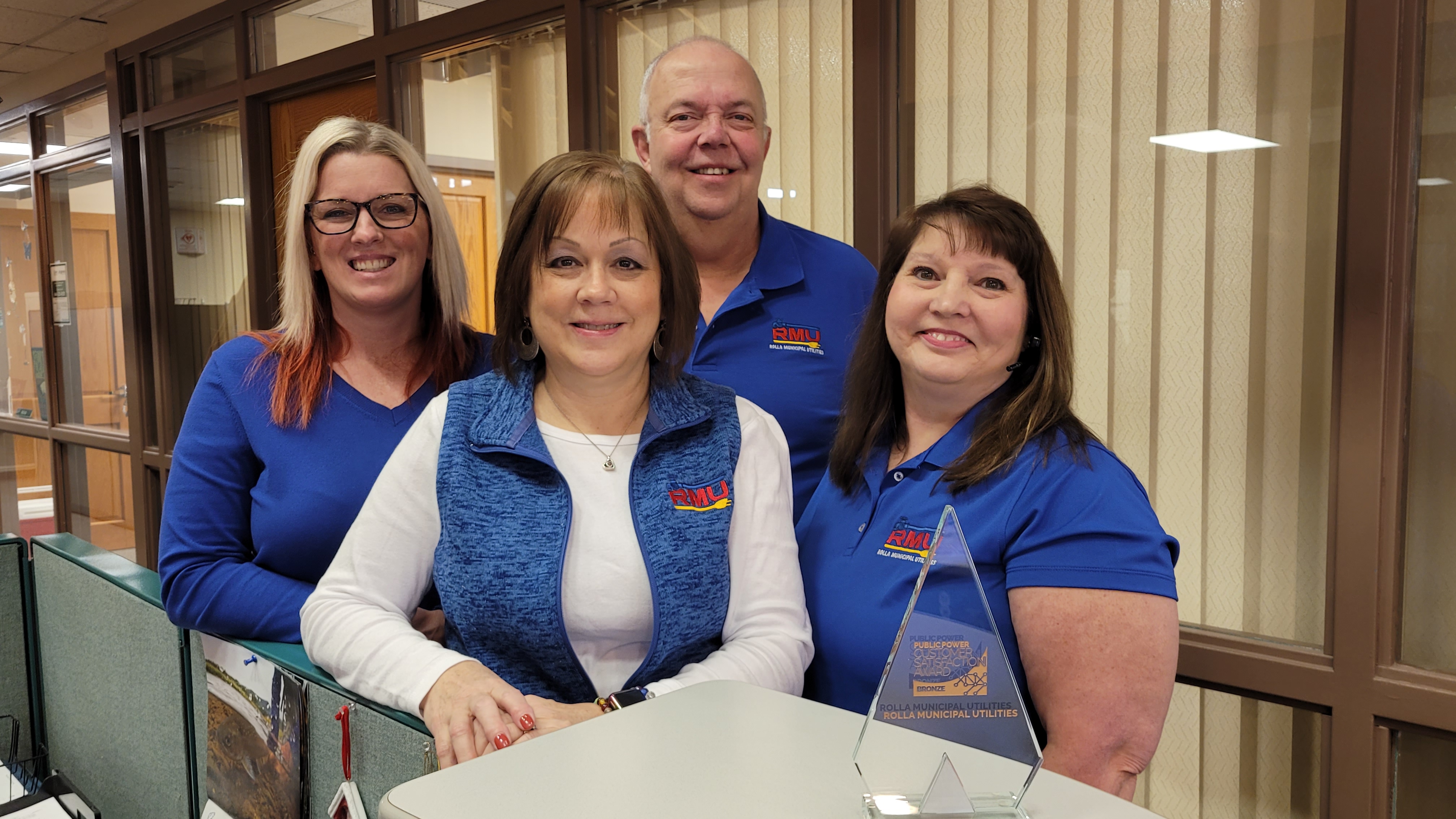Public power utilities have long used customer satisfaction surveys to assess how well they are meeting or exceeding customer expectations. Administering the survey is only one step in improvement — utility leaders must accept the findings to identify priority areas, and then implement changes to customer-facing operations, processes, and programs.
Customer satisfaction can be related to any aspect of a utility’s operations or presence in the community. The Public Power Data Source, a joint service of the American Public Power Association and GreatBlue Research, involves a survey instrument that measures various factors that affect customer satisfaction, including:
- Customer service
- Field personnel
- Communication
- Reliability
- Value
- Outage response
- Innovation
The surveys provide utilities with a quantifiable basis to launch an initiative, taking decision-making out of the realm of “This is what I think we should do,” to “The data clearly indicates we need to improve in these areas.”
Leaders at three public power utilities shared how they are using findings to identify process or program improvement opportunities and better understand what their customers value to ensure they are delivering on what customers deem most important.
Relying on the Personal Touch
Groton Electric Light Department in Massachusetts has surveyed its customers five or six times over the past few decades and has been using this feedback to drive improvements.
“The surveys help us identify improvements we could make, like in communications and community activities,” said Tammi Lemire, business manager at the public power utility, which serves about 5,000 customers in north-central Massachusetts. “We’re constantly using the GreatBlue Research surveys to improve our processes and programs with the customers in mind.”
 She said the percentage of customers who read the customer newsletter has gone up in recent years after the utility made some changes suggested by the survey. GELD has also increased how often it posts to its Facebook page, she added.
She said the percentage of customers who read the customer newsletter has gone up in recent years after the utility made some changes suggested by the survey. GELD has also increased how often it posts to its Facebook page, she added.
The public power utility used prior survey results in other ways to show alignment with customers on their top issues of concern — price and reliability.
The utility charges significantly less than the surrounding investor-owned utilities, and GELD, through its wholesale electric supplier Massachusetts Municipal Wholesale Electric Co., is not shy about informing its customers of that fact.
“We’re constantly reminding customers about how our prices compare to neighboring IOUs,” said Jon Patterson, GELD’s general manager.
Given the importance customers place on electric reliability, GELD has taken steps to more actively improve reliability, partly through its tree-trimming program, while also informing customers about those changes.
“We compare very favorably to our neighboring IOUs,” commented Lemire, who shared how GELD consistently performs better on reliability and offers lower rates.
But that doesn’t mean there isn’t room for improvement. One area where customers rate the utility lower is participation in community activities.
“We’re a small utility with about 15 employees, and we can’t participate in every event or statewide program to boost energy efficiency like the bigger utilities can,” Patterson explained. Still, the utility is trying: Its lineworkers staff a booth at the quarterly Groton Fest, where they interact with attendees, display tools of their trade, and discuss the functions and features of the bucket trucks they showcase.
GELD also focuses on ways to demonstrate its customer-centricity, especially to new hires. Lemire recalled when a newly hired customer service representative took a call from a customer who had a tree blown into their yard during a storm. The customer asked when they could expect someone from GELD to remove that tree and restore power. Holding the phone away from herself, the rep relayed that question to Lemire. She didn’t hesitate: “We’ll send a truck right away.” That was a moment of truth that put expressed values into action in a way that turned the customer from a potential adversary to a possible advocate.
“We go out of our way to give new hires the opportunity to interact with customers on scheduled outages,” said Patterson.
For example, before scheduled outages to repair equipment, every affected customer is contacted in advance, either on the phone or through a door knock. Employees explain the reasons for the upcoming outage and how long the customer can expect to be without power. If a customer tells an employee they have something going on that can’t be interrupted, the utility will reschedule the outage.
The utility empowers those who interact with customers to fix problems, and higher-ups back them up, said Patterson, who began his career at GELD 16 years ago as a lineworker.
Lemire said GELD also declined to install an interactive voice response system to take customer calls, preferring to “preserve the human touch.”
Word has gotten around about GELD’s high-touch approach to service. One customer, Patricia C., posted this on GELD’s Facebook page: “Over my lifetime, having lived in different states and worked with different utility companies, GELD far surpasses in its transparency of pricing, reporting, and interaction with its customers. The reliability of GELD is phenomenal, and they also work hard at maintaining the infrastructure, anticipate problems before they occur, and excel in their responsiveness.”
Another customer, Max C., put it more succinctly: “GELD is the GOAT. You’re going to have to rip municipal power from my cold dead hands!”
“From the top down, we try to show and say that taking good care of our customers is our most important job,” Patterson said. “Everyone understands that it is their job to do what it takes to make things right.”
Showing the Public Power Difference
“A customer satisfaction survey is a great measuring tool. Without a measuring tool, how can you say if what you are doing brings value to customers? That’s why we are here — to bring value to customers,” shared Charlie West, general manager at Lowell Light and Power in Michigan.
Lowell is one of two public power utilities to win a gold-level Public Power Customer Satisfaction Award, which was presented in October 2023 at the Customer Connections Conference in San Antonio, Texas.
Lowell, which participated in the survey for the first time in 2023, serves about 3,200 customers. Located about 15 miles southeast of Grand Rapids, Michigan, the area surrounding its service territory is served by an IOU.
 West said he was especially keen to see how many respondents could identify Lowell as a community-owned utility.
West said he was especially keen to see how many respondents could identify Lowell as a community-owned utility.
Approximately 75% of the 198 Lowell customers surveyed correctly identified it as a public power utility. West said he was pleased with that score, but he wanted the number to go higher — even though it already was over 20 percentage points higher than the U.S. average.
“For me, that statistic is indicative of the significant differences between public and private utilities,” he said. Lowell’s prices are lower and its reliability is higher than the IOU that surrounds it. But West said he “doesn’t want to look good by making the other guy look bad,” and so Lowell’s communications on price and reliability as compared to its neighboring utility have been “cautious and respectful.”
He said Lowell will continue to demonstrate public power’s difference with words and deeds. “We’re using the results of the survey to make our messaging around public power more intentional, particularly in the words we use in marketing our energy efficiency programs,” West said.
Beginning last year, Lowell gave away trees with instructions for planting them away from power lines as part of its effort to improve electric reliability. The messaging that accompanies those trees also includes a little education about how the utility is owned by the community.
West observed, “You can spend a little time and effort at the front end to explain why we do what we do, or you can try to put the toothpaste back in the tube after something goes wrong. It costs a whole lot more to repair relations than it does to maintain positive relations.”
Lowell also plans to use the survey results to bolster its customers’ perception of the utility as innovative. “We had too many ‘don’t know’ answers to that question,” West said. “You don’t want to make knee-jerk changes based on one survey, but we can work a little harder in our communications to shine a light on the innovative things we do.”
Improving Communication
Rolla Municipal Utilities in Missouri also signed up for the Public Power Data Source in 2023, getting a comprehensive report on customer satisfaction from the survey.
 Rolla’s customers gave the utility high marks for reliability and outage restoration times. However, “our customers told us that our communications needed to improve,” said Jason Grunloh, business manager at Rolla. “That was disappointing but eye-opening in terms of where we needed to do better.”
Rolla’s customers gave the utility high marks for reliability and outage restoration times. However, “our customers told us that our communications needed to improve,” said Jason Grunloh, business manager at Rolla. “That was disappointing but eye-opening in terms of where we needed to do better.”
Rolla, about 70 miles southeast of St. Louis, serves about 10,000 customers, many of them college students. That poses the challenge of communicating with a transient population.
Rodney Bourne, Rolla’s general manager, speaks at local service club meetings and has appeared on a monthly radio show for years. The utility places ads in the local newspaper from time to time. But the survey results caused leaders to think harder about other communications channels, including targeted digital advertising, to better reach its college student demographic.
“If we said something last year, we have to remember that some of our customers weren’t here last year,” Bourne said. “So, we’re making extra effort to more frequently repeat some messages using different channels.”
A case in point was Rolla’s replacement of its 30-year-old billing system. Despite the utility’s efforts, some customers didn’t get the message about the change, specifically why they needed to reenter their credit card information. The utility took a number of calls from confused customers.
“It seems that every customer gets their information from different channels, and we are not on that channel,” Bourne commented. “We need to be on more channels.”
Using a survey to measure customer satisfaction expanded the range of data Rolla Municipal Utilities had about its customers’ likes and dislikes.
“Prior to fielding the survey last year, we relied on social media for insight into what customers were thinking,” recalled Bourne. “That produced a lot of random noise. Except for outage restoration posts, social media comments almost always showed the negative. No one was jumping onto social media to celebrate that they had electricity.”
“The more feedback we get, the better equipped we are to fix a problem,” said Grunloh. “It can be scary when you ask people for feedback, but it’s so worth it. Most of the time, you’ll hear that you are doing better than you think.”
Rolla, a bronze-level Public Power Customer Satisfaction Award winner, also recognizes opportunities to boost its innovation score. It doesn’t have a smart thermostat rebate program or time-of-use rates, but it did roll out a peak-demand reduction program. Bourne noted, “It can be quite a challenge to explain to customers why they should turn up their thermostat when it’s hot outside. It’s counterintuitive.”
“Overall,” he said, “the survey results reinforced the importance of being out in the community, talking with customers.” That’s why the utility is investigating alternative ways to meet and communicate with customers.
A Bank of Support
“Unfortunately, sometimes we have to do things that are not popular with customers, such as trimming trees or disconnecting service for nonpayment,” observed West of Lowell Light and Power. “Having high customer satisfaction helps create advocates for you in the community that can support you when you need it.”
In West’s view, a utility’s customer satisfaction scores — whether high or low — inevitably ripple through the organization, leading either to a virtuous cycle of improvements or a downward spiral to mediocrity.
“I can’t do a cause and effect, but it seems like there’s a good correlation,” he said. “A rising tide lifts all boats. People want to work for a well-regarded organization. If your organization has high customer satisfaction, employee morale is strengthened, and the culture is reinforced. There are fewer critical comments from customers. There are less problems retaining employees.”
After GELD won a gold-level Public Power Customer Satisfaction Award, employees got larger-than-typical raises and a one-time bonus.
“That blew us away, because our board is very frugal,” commented Lemire. “They are well aware that their decisions have a financial impact on customers. But they were over the moon when the scores came in. Their bonus decision made employees pretty happy, too.”

